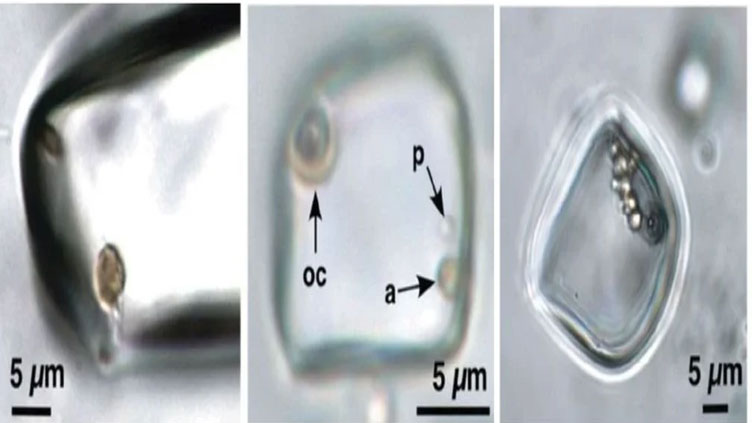Scientists have recently found traces of microorganisms, i.e., prokaryotic and algal life, which was further engrossed by the Geological Society of America. These small organisms have been uncovered on Earth and stem back to 830 million years old. These microorganisms like prokaryotic and the bacteria, such as algae and fungi, are rooted out of halite, which is sodium chloride, known as rock salt. Research has shown that these salts, along with the bacteria, were a hidden reserve until now and have the potential to uncover huge possibilities. Coupled with this, Mars is also a planet that has large salt deposits; hence these salts must have been traced back from Mars as well as the Earth. Moreover, we can expect the formation of an adequate number of other fluids known as “fluid incursions” along with these salt crystals.

According to geologist Sara Schreder-Gomes of West Virginia University, “A question has persisted amongst microbiologists: what are the oldest chemical sedimentary rocks that contain prokaryotic and eukaryotic microorganisms from the depositional environment?”. Thus, to unearth these questions, a technique known as the non-invasive optical method has been used by geologists in which they have captured these micro-organisms in-depth along with the fluid incursions. The magnified versions, with a range of up to 2000x, of these organisms show that there is a high possibility of them being alive now and the threat of being contaminated has been abolished due to this optical imaging.
The team led by geologists wrote, “Optical examination should be considered a fundamental step in any study of biosignatures in ancient rocks.” It allows the geologic context of microorganisms to be known before further chemical or biological analyses… and it provides a target for such analyses. ” To further investigate these organisms at the micro-level, researchers utilized both transmitted light and ultraviolet light rays to see through the mechanism inside the halite crystals and the environment surrounding algae that have resided for 830 million years.

This is considered the most optimistic discovery as these halo compounds were found alive without any impairment. This has given a new hope to scientists to further explore the possibilities of such types of micro-organisms on Earth as there is a very high probability now. As the team said, “Ancient chemical sediments, both of terrestrial and extra-terrestrial origin, should be considered potential hosts for ancient microorganisms and organic compounds.”


